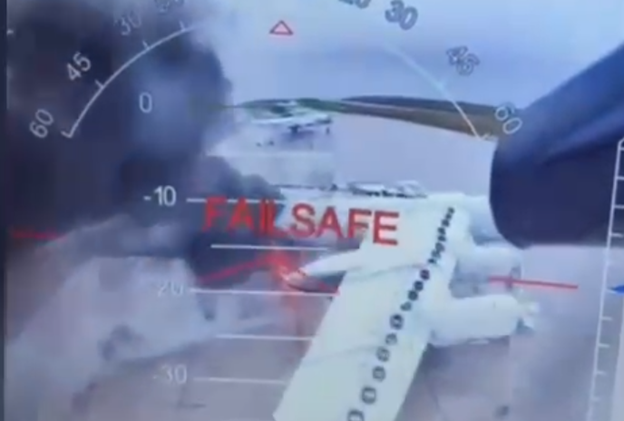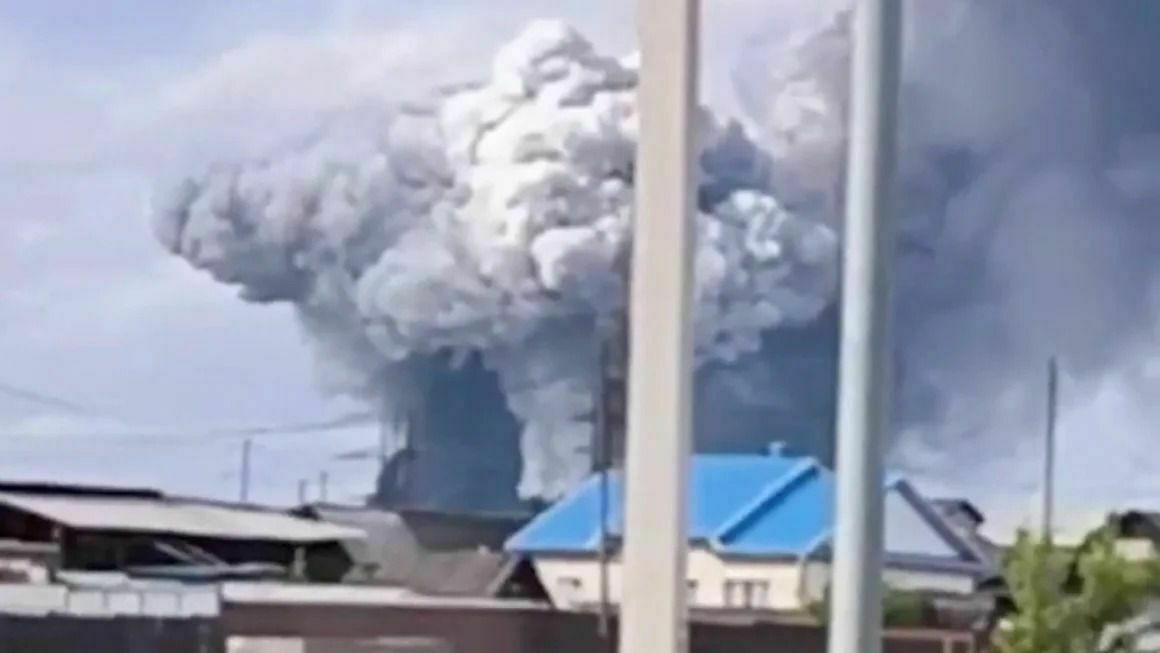
The first satellite images have emerged showing the aftermath of a major Ukrainian drone strike on Russia’s Belaya air base in Irkutsk Oblast, revealing significant damage to Moscow’s fleet of strategic bombers, geospatial intelligence consultant Chris Biggers posted on X on June 2.
The strike was part of a coordinated operation by the Security Service of Ukraine (SBU) targeting multiple Russian military airfields.
The photos, captured by U.S. aerospace company Umbra Space, appear to confirm the destruction of at least three Tu-95MS strategic bombers and one Tu-22M3 aircraft, with an additional Tu-95MS visibly damaged. Another image shows two more likely destroyed Tu-22M3 bombers on the field.
Today, Ukrainian intelligence reportedly launched 117 attack drones from trucks that had been placed near Russian air bases. I tasked several collects this morning via @umbraspace and my first images have already started processing. What a remarkable success in a well-executed… pic.twitter.com/LzXulw8jnK
— Chris Biggers (@CSBiggers) June 2, 2025
The SBU carried out the massive drone attack on June 1, which reportedly hit 41 Russian aircraft across four different airfields.
Ukraine's National Security and Defense Council official Andrii Kovalenko, head of the Center for Countering Disinformation, said at least 13 Russian aircraft were destroyed in the attack, with more damaged. The claims could not be independently verified.
According to a source in the SBU who spoke to the Kyiv Independent, the operation — codenamed "Spider Web" — involved smuggling first-person-view (FPV) drones deep into Russian territory. The drones were hidden in mobile wooden cabins on trucks and remotely launched at the right moment to strike bombers used in missile attacks on Ukrainian cities.
The Belaya air base, over 4,000 kilometers (2,500 miles) from Ukraine, was among the most distant targets. Other bases included the Olenya (Murmansk Oblast), Diaghilev (Ryazan Oblast), and Ivanovo (Ivanovo Oblast) air bases.
The SBU said the strikes disabled 34% of Russia's cruise missile bombers and inflicted approximately $7 billion in damage.
Russia's Defense Ministry later admitted to a "terrorist attack" on the four air bases, saying "several units of aircraft caught fire."
The scale and reach of the operation, enabled by low-cost FPV drones, underscore Ukraine's growing long-range strike capabilities, especially against aircraft that have long launched missile barrages from deep inside Russian territory.
SBU Chief Vasyl Maliuk and President Volodymyr Zelensky reportedly oversaw the long-planned operation.
On the evening of June 1, Zelensky described the operation as "brilliant," adding that Russia suffered "significant losses — entirely justified and deserved."
"What’s most interesting, and this can now be stated publicly, is that the 'office' of our operation on Russian territory was located directly next to FSB headquarters in one of their regions," he said in a post on social media.
"In total, 117 drones were used in the operation with a corresponding number of drone operators involved," he added.
 The Kyiv IndependentSonya Bandouil
The Kyiv IndependentSonya Bandouil
